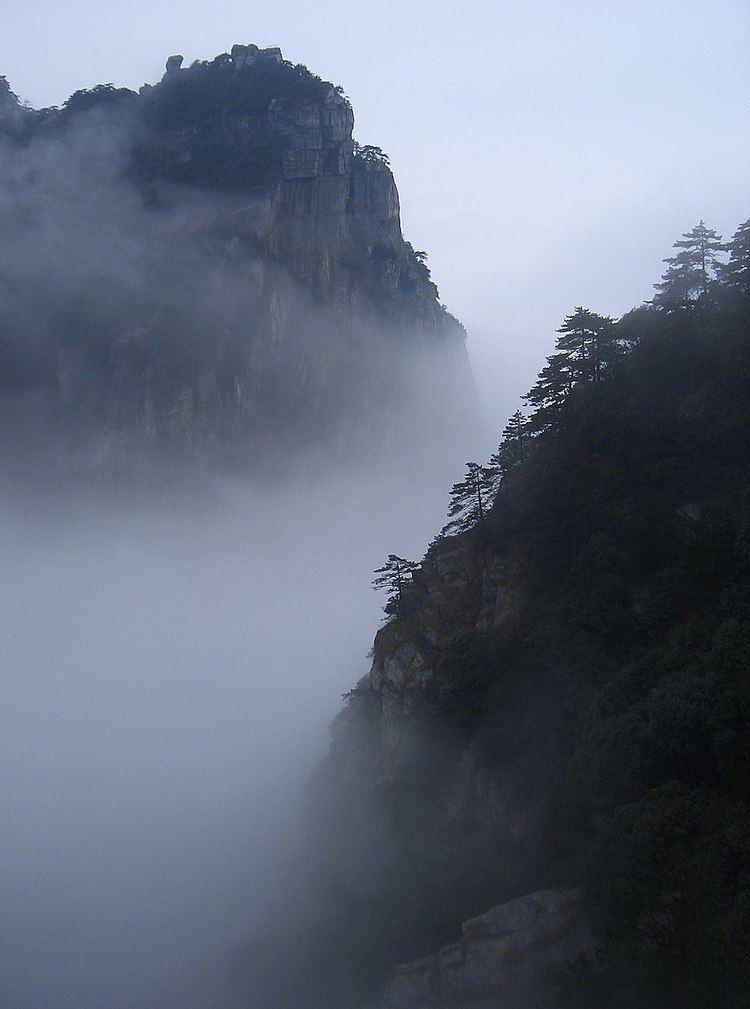Location China Criteria ii, iii, iv, vi UNESCO region Asia-Pacific Province Jiangxi | Type Cultural Reference 778 Elevation 1,474 m UNESCO World Heritage Site inscription 1996 | |
 | ||
Similar Mount Sanqing, Mount Tai, Mount Emei, Mount Longhu, Mount Jiuhua | ||
Mount lushan china
Mount Lu or Lushan (simplified Chinese: 庐山; traditional Chinese: 廬山; pinyin: Lúshān, Gan: Lu-san), also known as Kuanglu (匡庐) in ancient times, is situated in the northern part of Jiangxi province in southeastern China, and is one of the most renowned mountains in the country. The oval-shaped mountains are about 25 km long and 10 km wide, and neighbors Jiujiang city and the Yangtze River to the north, Nanchang city to the south, and Poyang Lake to the east. Its highest point is Dahanyang Peak (大汉阳峰), reaching 1,474 m above sea level, and is one of the hundreds of steep peaks that towers above a sea of clouds that encompass the mountains for almost 200 days out of the year. Mount Lu is known for its grandeur, steepness, and beauty, and is part of Lushan National Park, a UNESCO World Heritage Site since 1996, and a prominent tourist attraction, especially during the summer months when the weather is cooler.
Contents
Lushan was a summer resort for Western missionaries in China. Absalom Sydenstricker, the father of Pearl Buck was one of the first five missionaries to acquire property in the Kuling Estate on the mountain.
Mount lu
Attractions and Features
Popular attractions in Mount Lu include the Immortal Caverns (仙人洞), Meilu Outhouse (美庐别墅), Five Old Man Peaks (五老峰), White Deer Cavern Academy (白鹿洞书院), Three Tiled Springs (三叠泉), Luling Lake (芦林湖), Lushan Hot Springs (庐山温泉), Botanical Gardens (植物园), the Bamboo Temple (竹山寺), Guanyin Bridge (观音桥), Peach Blossom Garden (桃花源), and many more.
Political Significance
Mount Lu was once dubbed the xiadu ("summer capital") of the Republic of China. Chiang Kai-shek, China's leader at the time, would frequently spend his summers here. In June 1937, Zhou Enlai, then a major leader in the Communist Party, met with Chiang on the mountain to discuss a united front against the Japanese invasion. In July 1937, Chiang Kai-shek announced his intention for a full mobilization for war against Japan from Mount Lu. In 1946, following the war, the U.S. special diplomatic mission led by General George C. Marshall met with Chiang Kai-Shek to discuss the role of post-World War II China.
Mao Zedong convened three large conferences of senior party officials at Mount Lu, in 1959, 1961, and 1970. The 1959 conference became known as the Lushan Conference. The meeting saw the purge of decorated Chinese Civil War and Korean War general Peng Dehuai, who was critical of Mao's Great Leap Forward policies. The 1970 Lushan Conference took place during the Cultural Revolution, and marked the increasing antagonism between those loyal to Mao and those loyal to his chosen successor Lin Biao.
